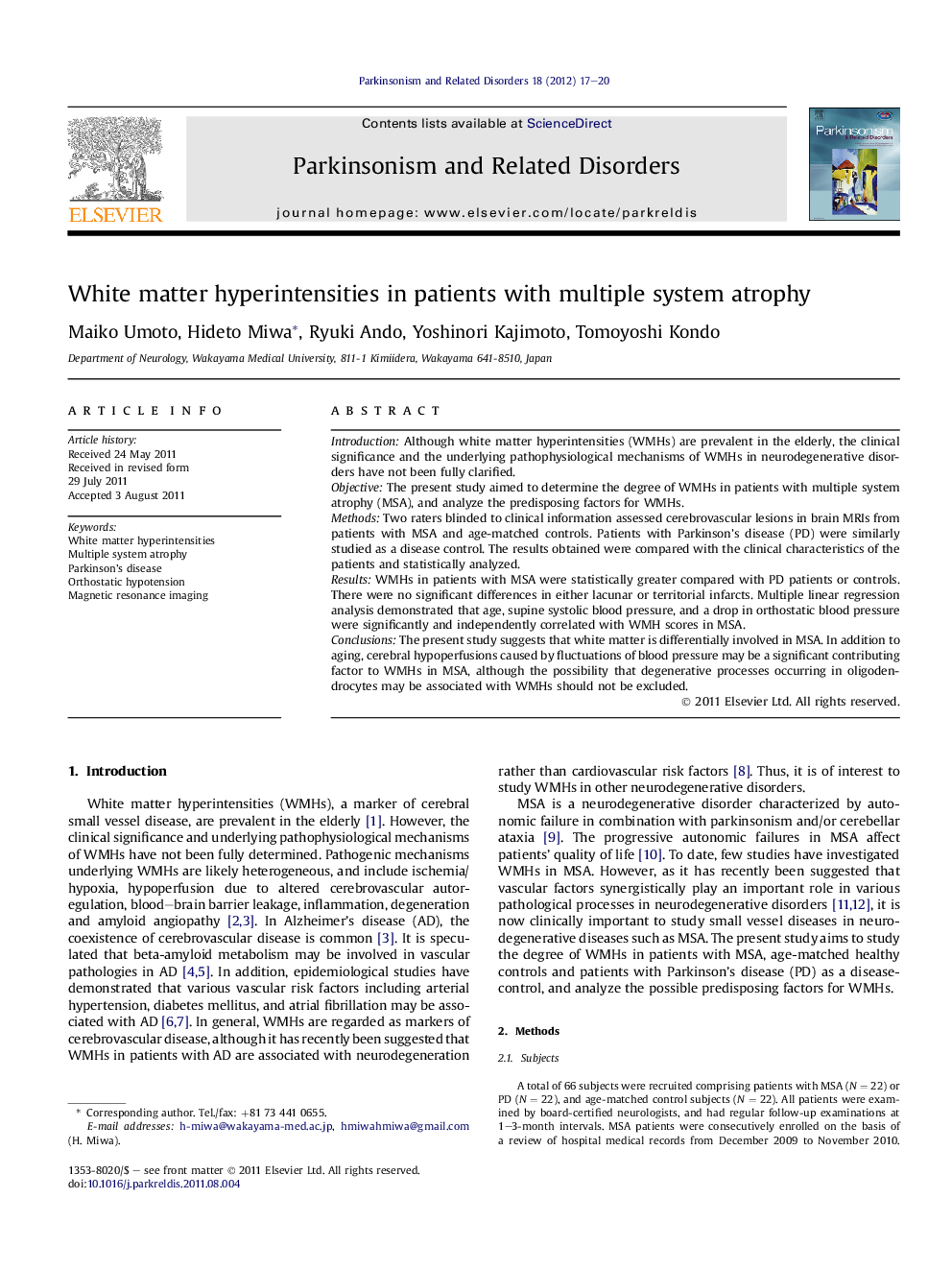| Article ID | Journal | Published Year | Pages | File Type |
|---|---|---|---|---|
| 1920656 | Parkinsonism & Related Disorders | 2012 | 4 Pages |
IntroductionAlthough white matter hyperintensities (WMHs) are prevalent in the elderly, the clinical significance and the underlying pathophysiological mechanisms of WMHs in neurodegenerative disorders have not been fully clarified.ObjectiveThe present study aimed to determine the degree of WMHs in patients with multiple system atrophy (MSA), and analyze the predisposing factors for WMHs.MethodsTwo raters blinded to clinical information assessed cerebrovascular lesions in brain MRIs from patients with MSA and age-matched controls. Patients with Parkinson’s disease (PD) were similarly studied as a disease control. The results obtained were compared with the clinical characteristics of the patients and statistically analyzed.ResultsWMHs in patients with MSA were statistically greater compared with PD patients or controls. There were no significant differences in either lacunar or territorial infarcts. Multiple linear regression analysis demonstrated that age, supine systolic blood pressure, and a drop in orthostatic blood pressure were significantly and independently correlated with WMH scores in MSA.ConclusionsThe present study suggests that white matter is differentially involved in MSA. In addition to aging, cerebral hypoperfusions caused by fluctuations of blood pressure may be a significant contributing factor to WMHs in MSA, although the possibility that degenerative processes occurring in oligodendrocytes may be associated with WMHs should not be excluded.
